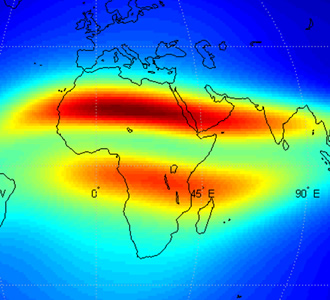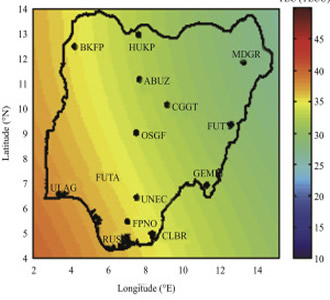UN - ARCSSTEE
Space Weather information dissemination hub.
Features
Workshops
Trainings
Real Time Image Gallery
FEATURES
Daily Space Weather Nowcast and Forecast
Henceforth, due to some administrative restructuring and in a bid to promote regional efficiency the space weather casts shall be found here at the UN Regional Centre’s page.
The general public and in particular patrons of space technology-dependent systems/ operations shall benefit tremendously from the space weather now- and forecasts.
Summary of space weather and space weather parameters/observations at the given hours of nowcast and 3-day forecast of daily ionospheric map generated from regional models are as follows:
Space Weather Daily condition
18 April 2024; 10:46 UT
Summary of Space Weather
Sunspot AR3639 has a ‘beta-gamma-delta’ magnetic field that poses a threat for X-class solar flares. The geomagnetic conditions are quiet. The solar wind speed has increased.
Space Weather parameters / observations;
Sunspot Number:199
10.7cm Flux: 217 sfu
Solar wind speed: 357.2 km.s-1A
Solar wind density: 1.26 protons.cm3
Kp: 0.33
Bz: 1.13 nT (North)
Bt: 5.66 nT
Dst: -6 nT
Total Electron Content (TEC) Nowcast and Forecast
The TEC Model
The NigTEC gives the forecast of the ionospheric condition over Nigeria while AfriTEC give the forecast over Africa.
Here, TEC is shown in form of spatial maps and vidoes for three days.
This is intended for global usage in ionospheric studies.

Africa GNSS TEC Models
The AfriTEC model is a model of the ionospheric GNSS TEC over the entire African region (Longitudes 25 degree West to 60 degree East, Latitudes 40 degree South to 40 degree North). The model can be used .......

Nigeria GNSS TEC Models
The NIGTEC is a model of the ionospheric GNSS TEC over Nigeria (Longitudes 2-15 degrees East, Latitudes 4-14 degrees North) The model can be used to obtain the ionospheric GNSS TEC at all locations over Nigeria.
